Algebraic Expressions Study Guide
What is an Algebraic Expression?
An algebraic expression is a mathematical phrase that can contain numbers, variables, and operations such as addition, subtraction, multiplication, and division. It does not have an equal sign and represents a value or a relationship between values.
Components of an Algebraic Expression
An algebraic expression can be broken down into several parts:
- Constants: These are fixed numerical values in an expression, such as 3, 7, or -5.
- Variables: These are symbols, usually letters, that represent unknown values or quantities, such as x, y, or a.
- Coefficients: These are the numerical values that precede a variable, such as 3x (where 3 is the coefficient).
- Terms: These are the parts of the expression that are added or subtracted from each other, such as 3x, 7y, or -5.
- Operations: These are the mathematical operations such as addition, subtraction, multiplication, and division that combine the terms and constants in the expression.
Examples of Algebraic Expressions
Here are some examples of algebraic expressions:
- 3x + 7y
- 2a - 5b
- 4xy + 2x - 3y
- 5c2 - 3c + 8
Key Concepts to Remember
When working with algebraic expressions, it's important to keep the following key concepts in mind:
- Like Terms: Terms that have the same variables raised to the same powers are considered like terms and can be combined.
- Distributive Property: The distributive property allows you to multiply a single term by each term inside parentheses.
- Order of Operations: Follow the order of operations (PEMDAS - Parentheses, Exponents, Multiplication and Division from left to right, Addition and Subtraction from left to right) when simplifying algebraic expressions.
Practice Problems
Here are some practice problems to help you reinforce your understanding of algebraic expressions:
- Simplify the expression 2x + 5 - 3x + 8y when x = 4 and y = 2.
- Factor the expression 6a - 18b.
- Simplify the expression (3x + 2)(4x - 5).
Remember, practice is key to mastering algebraic expressions. Keep working on problems and don't hesitate to ask for help when needed!
.◂Math Worksheets and Study Guides Sixth Grade. Exponents to Repeated Multiplication
Study Guide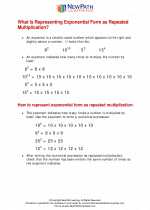 Exponents to Repeated Multiplication
Exponents to Repeated Multiplication  Worksheet/Answer key
Worksheet/Answer key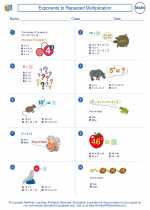 Exponents to Repeated Multiplication
Exponents to Repeated Multiplication  Worksheet/Answer key
Worksheet/Answer key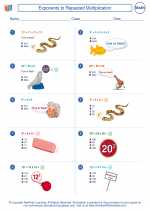 Exponents to Repeated Multiplication
Exponents to Repeated Multiplication  Worksheet/Answer key
Worksheet/Answer key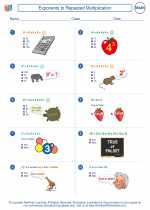 Exponents to Repeated Multiplication
Exponents to Repeated Multiplication  Worksheet/Answer key
Worksheet/Answer key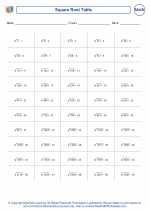 Square Root Table
Square Root Table 

 Worksheet/Answer key
Worksheet/Answer key
 Worksheet/Answer key
Worksheet/Answer key
 Worksheet/Answer key
Worksheet/Answer key
 Worksheet/Answer key
Worksheet/Answer key

The resources above cover the following skills:
Number and Operations (NCTM)
Understand numbers, ways of representing numbers, relationships among numbers, and number systems.
Develop an understanding of large numbers and recognize and appropriately use exponential, scientific, and calculator notation.